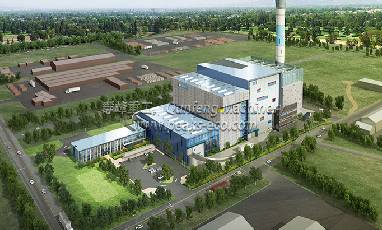 The waste management plant shares this article for you.
The waste management plant shares this article for you.
In recent years, society, companies, and legislators have tended to regard high recovery rates as the main goal of sustainable development work. More comprehensive methods such as the circular economy and life cycle analysis, which look at the overall environmental impact of resource use, have overshadowed this idea.
The waste hierarchy is usually displayed as an inverted triangle, which provides a hierarchical method to show the preferred and non-preferred methods of solid waste generation and management. The specific names and numbers of the actual categories may vary, depending on the specific group of people using this model, but the basic thinking process is to avoid consumption and reduce sources and reuse is preferable to recycling, and recycling is preferable to recycling. Waste is converted into energy, and ultimately into landfill.
The best way to manage waste is not to create waste in the first place. This may involve the choice of avoiding unnecessary consumption of goods and services, and it may also include the purposeful reduction of inputs into creating products by reducing the source. This source reduction effort can include reducing the use of raw materials and saving energy, as well as reducing waste pollution and toxicity. Popular initiatives include reducing packaging, improving energy-efficient production and facilities, using renewable energy, and improving fuel efficiency in cargo transportation. The reduction in water consumption and water footprint has recently become the focus of waste reduction efforts.
Reuse is another powerful means to avoid waste. For example, a reusable packaging system can eliminate the need for disposable packaging, and can also provide better product protection, thereby reducing product damage and related losses. In a broader sense, creating more durable goods may be a useful way to reduce waste.
Managing pallet packaging retrieval procedures from multiple locations requires communication, coordination, and commitment to ensure success. If it is impossible to reduce the original source or use durable reusable commodities, the next preferred method involves product recycling or organic composting.
Recycling involves collecting, sorting, and processing products into raw materials, which can be used as inputs for the production of new products. For its part, product recycling usually produces a material that is more energy-efficient, less polluting, and more expensive to produce, while avoiding the consumption of raw materials. Take aluminum as an example. In 2013, 60.2 billion aluminum cans were recycled and reused in the United States, with a recycling rate of 66.7%. In the recycling process, the use of 17 million barrels of gasoline was avoided because the energy required to process the recycled materials is less than the original content.
Composting involves the removal of organic materials such as garden decorations and food residues from the landfill, thereby preventing the emission of harmful greenhouse gases.
The waste-to-energy (WTE) process involves capturing energy from waste. This can be achieved through a variety of methods, including waste incineration, pyrolysis, anaerobic, digestion, gasification, and landfill gas recovery.
For example, in Sweden, about half of solid waste is incinerated to generate electricity. Pyrolysis is used in processes such as generating clean energy from used tires and converting waste plastics into oil.
Disposal is the ultimate choice in the waste hierarchy, but it is a key component of integrated waste management. The landfill is the most common disposal method, and its design, operation and end of life requirements are strictly controlled. In the United States, landfills must comply with strict standards established by the EPA and are usually regulated at the state, tribal, or local level.
Even in the landfill, attention must be paid to recovery. The methane gas produced by the decay of organic matter can be captured for energy. After being closed, the landfill can be covered and reused for other purposes, such as parks or golf courses.